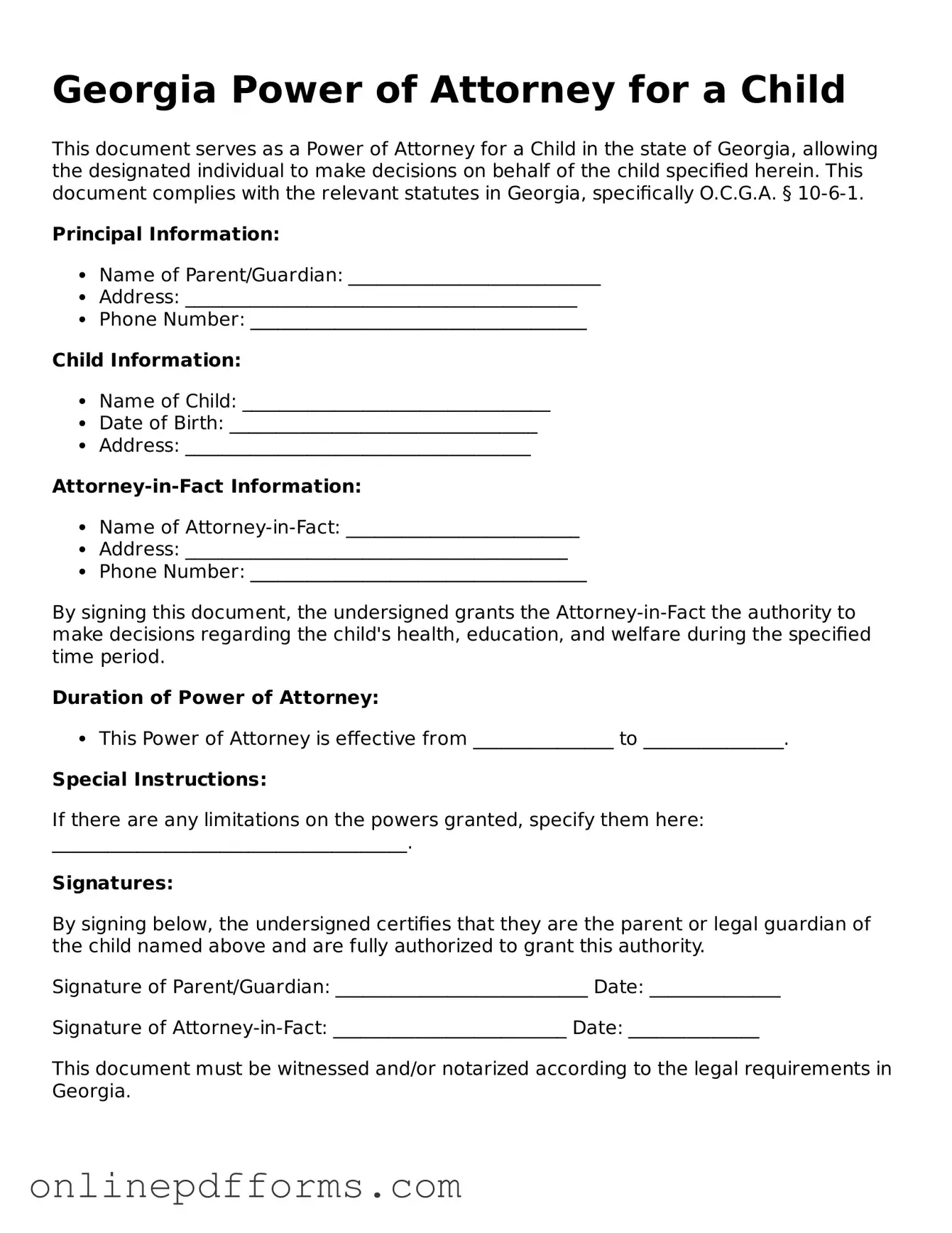The Georgia Power of Attorney for a Child form is similar to a General Power of Attorney. Both documents grant authority to an agent to act on behalf of another person. However, the General Power of Attorney can cover a wide range of decisions, including financial and medical matters, while the Power of Attorney for a Child specifically focuses on decisions related to the care and welfare of a minor. This specificity makes the child-focused document essential for parents or guardians who need to delegate authority for child-related matters temporarily.
Another document comparable to the Power of Attorney for a Child is the Medical Power of Attorney. This form allows an individual to designate someone to make medical decisions on their behalf. Similar to the Power of Attorney for a Child, it is crucial when a parent or guardian is unavailable to make healthcare decisions for their child. Both documents ensure that the chosen agent can act in the best interest of the child, whether that involves everyday care or critical medical choices.
The Temporary Guardianship form also shares similarities with the Power of Attorney for a Child. Both documents allow a designated individual to take care of a child in the absence of the parent or legal guardian. However, while the Power of Attorney for a Child is often used for specific tasks and decisions, a Temporary Guardianship typically provides broader authority and may last longer. This makes it particularly useful in situations where a parent may be unable to care for their child for an extended period.
A Child Custody Agreement is another document that resembles the Power of Attorney for a Child. Both documents deal with the care and custody of a minor. However, the Child Custody Agreement is usually established during a divorce or separation, outlining the living arrangements and responsibilities of each parent. In contrast, the Power of Attorney for a Child allows a parent to grant authority to another individual without altering custody arrangements, making it a more flexible option for temporary care.
When dealing with the sale of a trailer, having the appropriate documentation is crucial to ensure a smooth transaction. In this regard, the Auto Bill of Sale Forms provide a reliable framework for both sellers and buyers, documenting the transfer of ownership and protecting the interests of both parties involved in the sale. This legal document not only signifies the agreement between the buyer and seller but also serves as an essential record for future reference and registration purposes.
The Consent to Travel form also has similarities with the Power of Attorney for a Child. This document is often used when a child is traveling with someone other than their parents or legal guardians. It provides consent for the child to travel and may include details about the trip. Like the Power of Attorney for a Child, it is designed to ensure that the child’s welfare is prioritized and that the traveling adult has the necessary permissions to care for the child during the trip.
The Child Care Agreement is another document that parallels the Power of Attorney for a Child. This agreement typically outlines the responsibilities and expectations between parents and childcare providers. While the Power of Attorney for a Child grants legal authority to make decisions, the Child Care Agreement focuses more on the practical aspects of childcare. Both documents are essential for ensuring that a child’s needs are met when parents are unable to provide direct care.
Lastly, the Affidavit of Guardianship shares similarities with the Power of Attorney for a Child. This document is often used to establish a guardian for a child in situations where the parents are unable to care for them. While the Power of Attorney for a Child allows for temporary delegation of authority, the Affidavit of Guardianship may be used in more permanent situations. Both documents serve to protect the child’s interests and ensure that they are cared for by a responsible adult.
